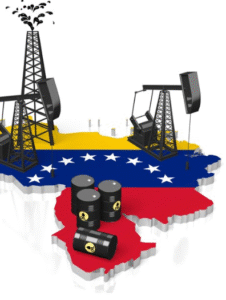$GAZP $PTR $BTC
#China #Russia #EnergyDeals #NaturalGas #OilMarket #Geopolitics #EnergySecurity #Sanctions #EconomicImpact #GlobalMarkets #EnergyTransition #GasInfrastructure
In May 2014, China and Russia signed a landmark 30-year natural gas supply agreement worth a staggering $400 billion. This deal was announced during Russian President Vladimir Putin’s state visit to Beijing at a time when geopolitical tensions were escalating. Russia was embroiled in its conflict with Ukraine and facing tightened economic sanctions from Western countries. The agreement solidified a growing energy partnership between the two nations, with China securing a long-term supply of natural gas and Russia seeking an alternative to its European energy markets. This pivot toward Asia signaled Russia’s intention to hedge against Western sanctions while tapping into the growing demand for energy from the world’s second-largest economy. For China, the deal aligned with its ambition to diversify energy sources while enhancing energy security.
Russia’s need to invest up to $80 billion in new production facilities and infrastructure, including pipelines like the Power of Siberia, underscored the deal’s economic and logistical significance. By 2022, Russia doubled down on this relationship, signing a second 30-year supply agreement with China just before initiating its invasion of Ukraine. This second deal further evidenced a strategic reliance on economic partnerships with Beijing, especially as Western markets became increasingly inaccessible. The global energy market’s reaction to these developments has been marked by volatility, with Europe scrambling to replace Russian gas and global liquefied natural gas (LNG) prices surging. Additionally, these deals highlight how geopolitics continues to shape major energy trade flows.
Financially, the agreements tilt in China’s favor. The deals have been largely denominated in yuan and rubles, helping both countries reduce dependence on the US dollar in energy transactions, a significant shift for global trade. However, analysts suggest that Russia may have compromised on pricing terms to secure commitments amid sanctions and limited options for market access. For China, the agreements represent a bargain, ensuring lower-cost energy imports compared to market alternatives while gaining leverage over Moscow. As LNG demand in Asia rises, this dynamic places China in a position of power, effectively dictating the terms of future cooperation in energy trade — a stark contrast to the West’s strained relations with Russia.
From a market perspective, these partnerships underline shifting trade routes in the global natural gas market. Russian gas giant Gazprom ($GAZP) has pivoted to focus on pipeline capacities geared toward China, potentially sidelining Europe. Chinese energy players like PetroChina ($PTR) gain from stable, long-term supply channels, which also safeguard Asian economic growth amid global energy uncertainties. Yet, broader implications remain for commodities markets and currencies, as the deals reinforce China’s emerging influence in global trade while further isolating Russia from Western economies. In the crypto sector, there’s speculation that these dollar-excluded transactions could encourage broader adoption of decentralized digital currencies like Bitcoin ($BTC) to bypass traditional financial systems.











Comments are closed.